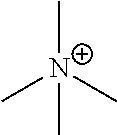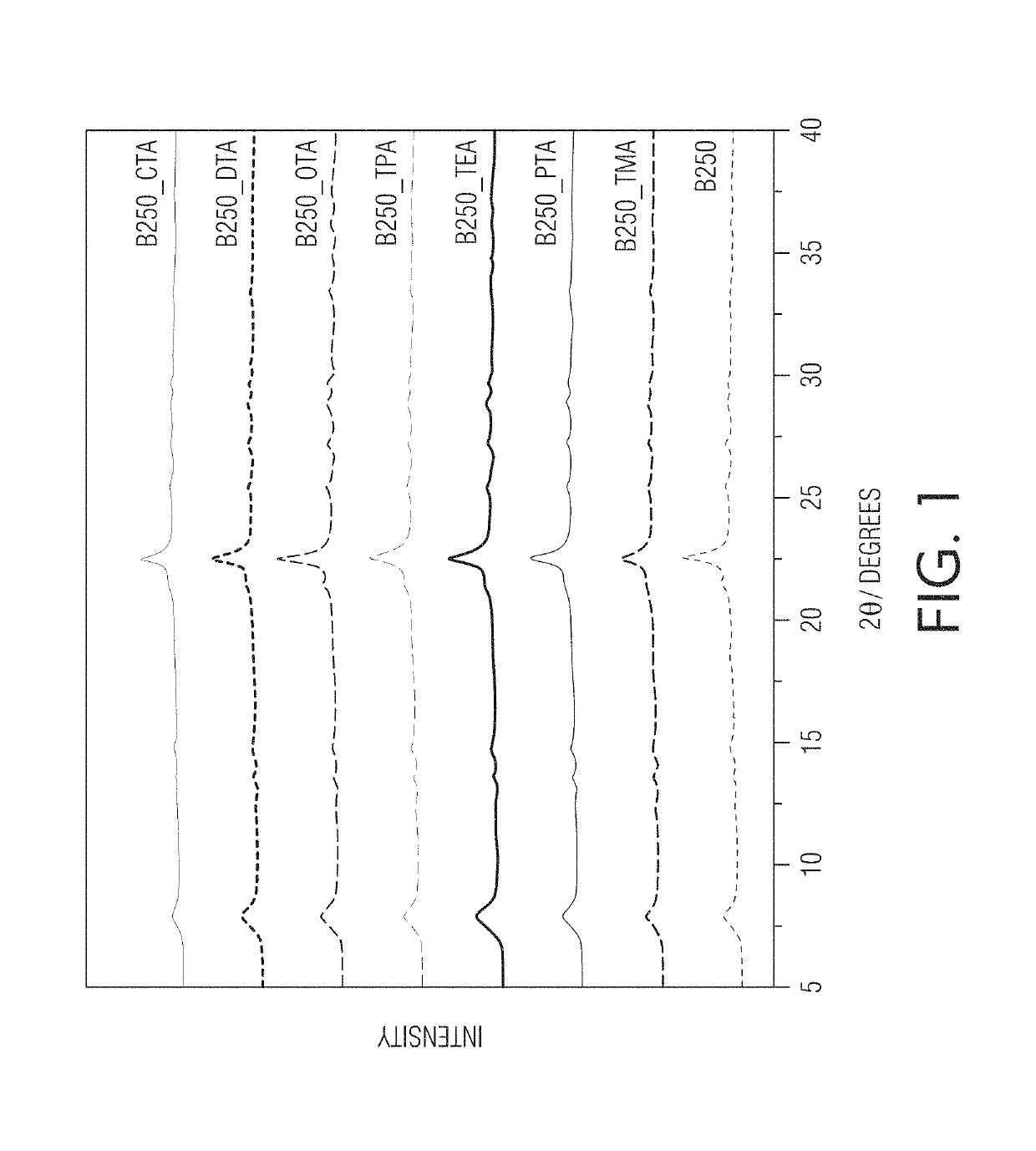Methods of producing hierarchical beta zeolites with tunable mesoporosity through pore directing agent assisted base leaching
a technology of pore directing agent and base leaching, which is applied in the direction of catalyst activation/preparation, hydrocarbon preparation catalyst, physical/chemical process catalyst, etc., can solve the problems of less effective use of zeolite catalyst, less stable beta, and increased coking possibility, etc., to achieve a wide range of effects, reduce microporosity and crystallinity, and high reproducibility
- Summary
- Abstract
- Description
- Claims
- Application Information
AI Technical Summary
Benefits of technology
Problems solved by technology
Method used
Image
Examples
example 1
[0055]The parent beta zeolites, provided by TOSOH Corporation, were coded as “Bx”, where “x” refers to the nominal Si / Al ratios. These zeolites were in their protonic form. All base leaching treatments were carried out at 65° C. for 30 min. In a typical experiment, the alkaline solution (0.2M NaOH+0.2M PDA, 1:1 mixture) was stirred at 400 rpm and heated to 65° C. before the parent zeolite samples were added in the amounts of 3.3 g zeolites per 100 ml solution
[0056]The leached samples in the suspension were retrieved by quenching, centrifuging, washing with distilled water, and drying overnight at 110° C. The leached samples are labeled as “Bx_PDA's acronym” and “NaOH” is omitted for brevity. PDA's acronym is defined in Table 2.
[0057]
TABLE 2SURFACTANT MOLECULES USED IN NAOH BASE LEACHING AS PORE DIRECTING AGENTSChemical NameStructureFormula CounterionCationic SurfactantsTMA+Tetramethylammonium(CH3)4N+Br⊖PTA+Propyltrimethylammonium(CH3)3N+C3H7Br⊖TEA+Tetraethylammonium(C2H5)4N+Br⊖TPA+T...
PUM
| Property | Measurement | Unit |
|---|---|---|
| size | aaaaa | aaaaa |
| size | aaaaa | aaaaa |
| mesopore size | aaaaa | aaaaa |
Abstract
Description
Claims
Application Information
 Login to View More
Login to View More - R&D
- Intellectual Property
- Life Sciences
- Materials
- Tech Scout
- Unparalleled Data Quality
- Higher Quality Content
- 60% Fewer Hallucinations
Browse by: Latest US Patents, China's latest patents, Technical Efficacy Thesaurus, Application Domain, Technology Topic, Popular Technical Reports.
© 2025 PatSnap. All rights reserved.Legal|Privacy policy|Modern Slavery Act Transparency Statement|Sitemap|About US| Contact US: help@patsnap.com



